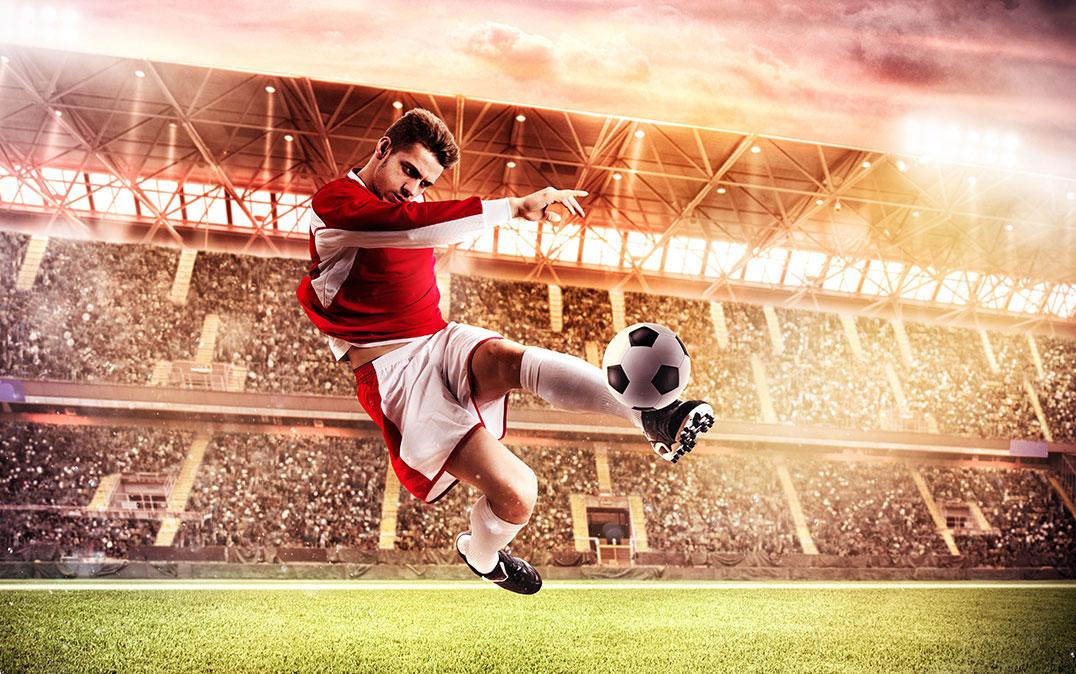Research News
The "Sweet Spot": Science Uncovers the Secret to Superb Shots in Soccer
 Image by alphaspirit.it/Shutterstock
Image by alphaspirit.it/Shutterstock
A new study shows how factors like swing angle and foot orientation can be controlled to adjust point of contact and attack angle between the foot and the ball to achieve straight, curve, and knuckle-ball kicks in soccer
Tsukuba, Japan—Soccer, also known as football, is the most popular sport in 57 countries, and its players are among the most highly paid athletes in the world; therefore, every shot is valuable. Knowing how to adjust foot orientation and swing when kicking the ball can help players understand how to improve their shots on goal, giving them a competitive edge.
In a study published last month in Proceedings of the Institution of Mechanical Engineers, Part P: Journal of Sports Engineering and Technology, researchers at the University of Tsukuba focused on how the foot interacts with the ball to achieve desired ball trajectories.
"The point of impact on the ball matters. For a straight ball trajectory, aim close to center, otherwise, aim off-center—for a curved ball trajectory, aim closer to the near side of the ball, and for a knuckle ball, aim closer to the far side," explains first author Mr. Kimachi.
However, although the distance of the impact point from the center of gravity of the foot affects ball rotation to produce straight, curved, or unpredictable ball trajectories, it is a factor that indicates the foot angle of swing toward the ball that dictate where (i.e., location of point of contact) and how (i.e., angle of attack) the foot will strike the ball.
"Using high-speed 3D motion capture technology, we confirmed that the correlation between the angle of the swing vector and the resulting ball rotation was high," senior author Professor Nakayama explains. "We then characterized the foot-to-ball interactions in straight, curved, and knuckle-ball kicks."
The research team found that, for all three types of kicks, toes are pointed downward and the foot is rotated outward; however, for curved and knuckle-ball trajectories, the foot is everted slightly less to allow the inside of the foot to make contact with the ball. In addition, for curved trajectories, wide swing angles allow more of the face of the inside to make contact with the ball. For straight trajectories, the top of the instep is the area of the foot that made contact with the ball.
Now, when coaching players in developing their shooting skills, coaches can instruct players on ways to achieve the outcome (for example, "for a curve shot, kick from a wide inside angle and angle your foot so that your impact (initial contact) point on the ball is off-center"). The findings of this study can be used to help improve shooting skills in soccer development programs and can likely be extended to other ball sports.
###
The author(s) received no financial support for the research, authorship, and/or publication of this article.
Original Paper
The article, "Features of ball impact in straight, curve and knuckle kicks in soccer," was published in Proceedings of the Institution of Mechanical Engineers, Part P: Journal of Sports Engineering and Technology at DOI: 10.1177/17543371221101234
Correspondence
Professor NAKAYAMA Masao
Faculty of Health and Sport Sciences, University of Tsukuba
Related Link
Faculty of Health and Sport Sciences



